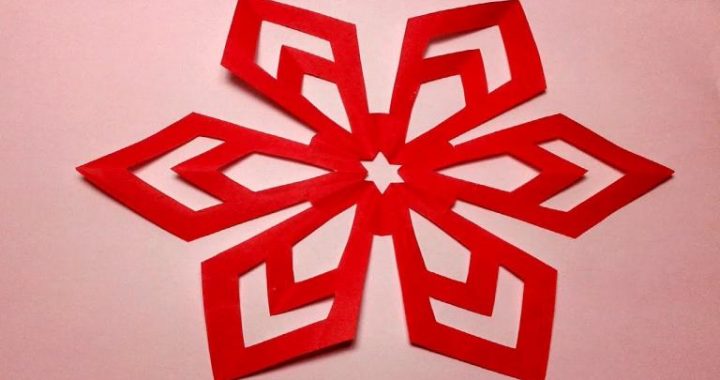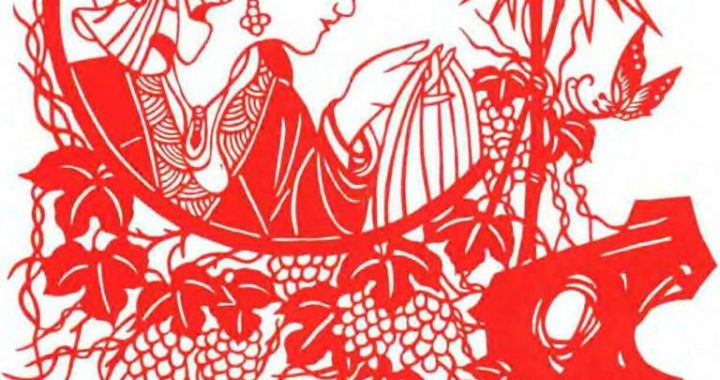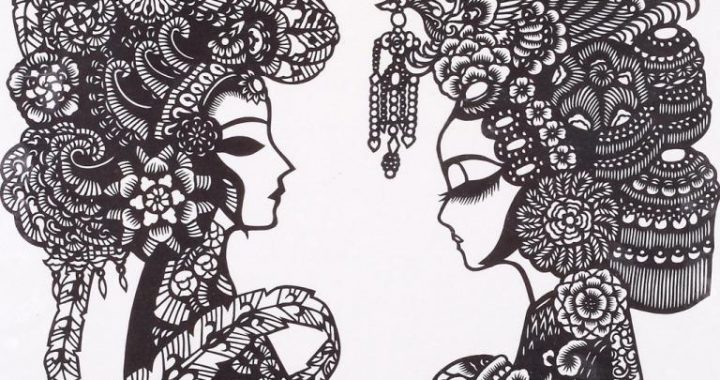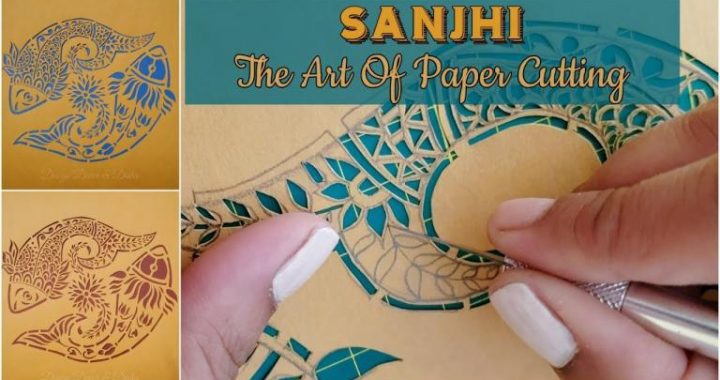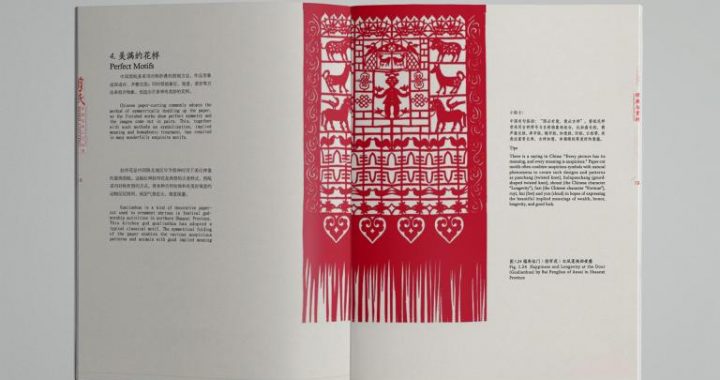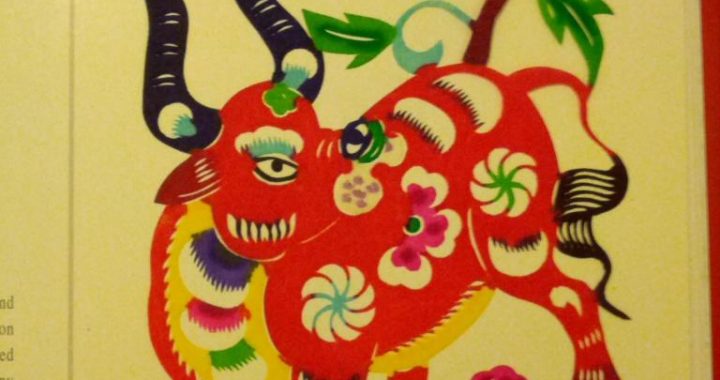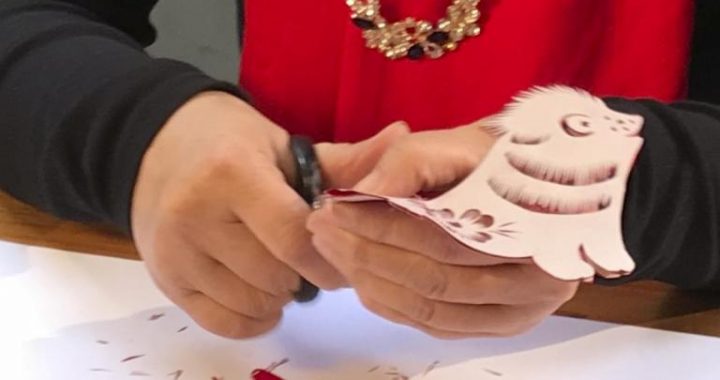Gold and silver ware
4 min readThe major methods for processing gold articles originated from bronze making, which include smelting, mould founding, hammering, welding, bead-forming, engraving, wire-drawing, wire-twining, wire inlay, etc., but developed or innovated.
Take the bead-forming craft for example. It is an art unique to gold processing in which the first step is to let melted gold drip into warm water drop by drop to form beads of various sizes, and then by welding each tiny drop of gold, fish-egg patterns or bead-string patterns are made. Silverware turned up later than gold, and followed gold articles in working procedures.
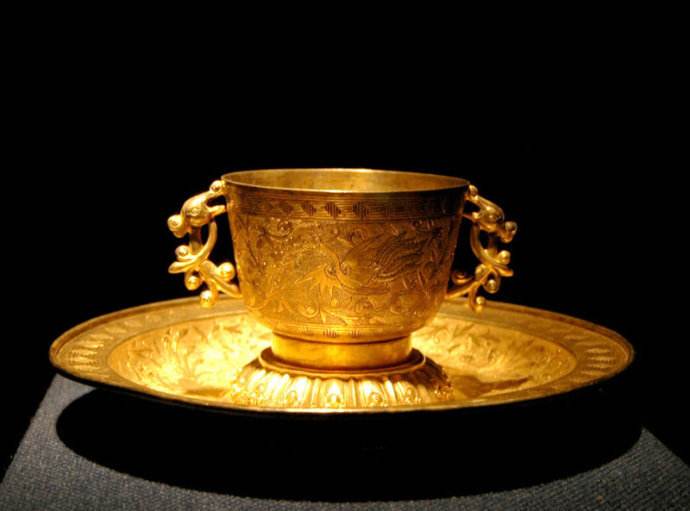
Eagle decorated golden crown top and golden crown belt of the Warring States Period.
From the very beginning gold and silver articles came out as artworks. The existing earliest gold objects were made in the Shang Dynasty more than 3,000 years ago.
They were mostly ornaments, simple in shape, small in size, with less decorative patterns. The Shang-dynasty gold articles were chiefly gold and silver foil, gold leaves and sheets, used to adorn utensils; only a few in the northern and northwestern regions were used for personal adornment. Of the earlier gold articles, the gold masks and the gold staffs unearthed from the early Shu-culture ruins in Sanxingdui of Guanghan, Sichuan Province, are the most eye-catching. In the Shang and Zhou dynasties, the bronze techniques and the jade carving both facilitated the growth of gold and silver crafts.
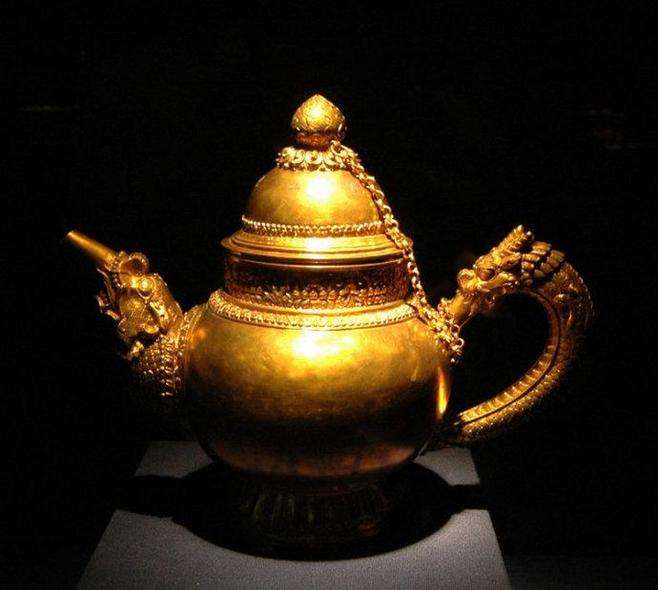
The silver chuwang yi (ladle for dipping water in the shape of a gourd used by the king of the State of Chu) kept in the Palace Museum is one of the earliest silver utensils discovered so far. During the Spring and Autumn and Warring States Period, articles with gold and silver inlay came into view in great quantity, which marked thehigh technical level of gold crafts at that time. The process of gold and silver inlay started from the mid-Spring and Autumn Period, prevailed in the Warring States Period and gradually went downhill since the Western Han Dynasty. It is one of the ancient fine metal techniques used for adornment. The procedure is to incise patterns or inscriptions on the surface of bronzeware by casting or by chiseling, then have gold and silver wire inlaid, and then grind and polish to produce a decorative effect.
Qin-dynasty silver basin,37 cm in diameter,5.5 cm high,1,705g in weight, housed in Shandong Zibo Museum.
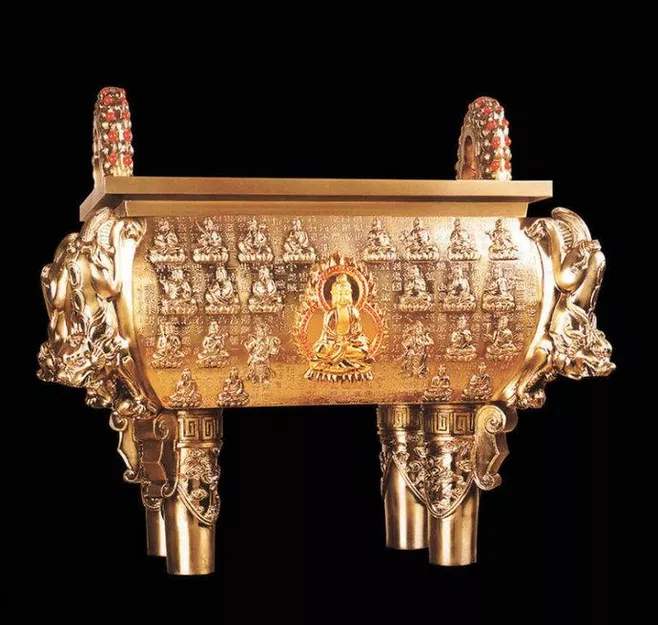
In the Han Dynasty, the gold and silver objects, in addition to decorating bronze and iron utensils using such techniques as coating, mounting, plating, inlaying, etc., were applied to lacquer ware and silk fabrics in the shape of foils or filings to increase splendor. Gradually the craft of using gold foil to make flower-shaped patterns grew mature, until it finally broke away from traditional bronze craft to develop all on its own.
During the Six Dynasties Period, as external exchange expanded and the Buddhist art spread, gold and silver articles used in Buddhism emerged, often giving the alien flavor of the northern nomads or the Persian Sassanids Empire.
The gold and silver articles in the Tang Dynasty were various in kind, including tableware, drinking bowls, vessels, containers for medicine, miscellaneous articles for household use, ornaments and articles for religious use. Moreover, the process in making them was meticulous and complex. Hammering, casting, welding, cutting, polishing, riveting, plating, carving and piercing were extensively used. So resplendent and graceful, so elegant and vivacious, so healthy and mature that had the gold and silver ware already become one of the signs of a prosperous age.
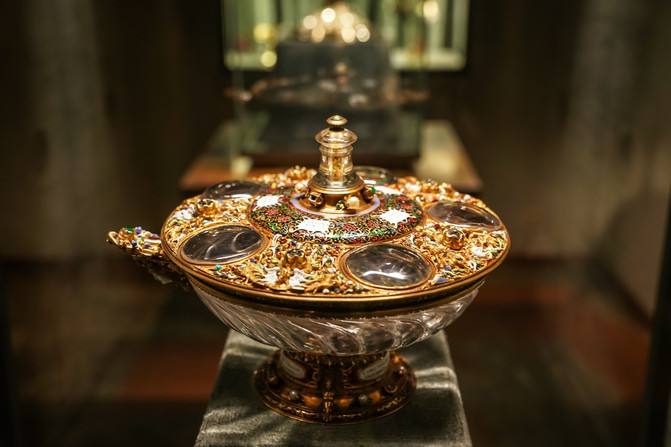
In the Song Dynasty works of gold and silver combined with wood, lacquer and other materials came into being, and the art of painting was introduced for adornment, using solid carving decoration and raised floral-pattern technique. In the Yuan Dynasty, new varieties of artworks were developed including vases, cases, zun(a kind of wine vessel in ancient times), lian(toilet case used by women), and shelves. In the Ming and Qing dynasties, the gold and silver articles were meticulous in shape and the workmanship was pleasing to the eye. In the Qing Dynasty, the compound process became more developed by which gold, silver combined with enamel, pearl, jade, gem, etc, set one another off to form a bright scene.
Tang-dynasty silver hollow ball-shaped censer-warmer.It is an ingenious device containing a perfumereceptacle on an axle which always maintains the same orientation regardless of any movement of the supporting structure.
Yuan-dynasty silver artwork, carved from a dragon-shaped stump. The artifact shows a Taoist priest sitting against a stump reading a book held in hand.

